- Home
- D. H. Lawrence
Life with a Capital L
Life with a Capital L Read online
D. H. Lawrence
* * *
LIFE WITH A CAPITAL L
Essays Chosen and Introduced by GEOFF DYER
Contents
Introduction by Geoff Dyer
Christs in the Tirol (1912)
Review of Death in Venice by Thomas Mann (1913)
From Study of Thomas Hardy (1914)
Whistling of Birds (1917)
Poetry of the Present (1919)
Memoir of Maurice Magnus (1921–2)
Indians and an Englishman (1922)
Taos (1922)
The Future of the Novel (1922–3)
Paris Letter (1924)
A Letter from Germany (1924)
Pan in America (1924)
The Bad Side of Books: Introduction to A Bibliography of the Writings of D. H. Lawrence (1924)
On Coming Home (1924–5)
Art and Morality (1925)
Morality and the Novel (1925)
The Novel (1925)
Why the Novel Matters (1925)
The Novel and the Feelings (1925)
Reflections on the Death of a Porcupine (1925)
Man Is a Hunter (1926)
Return to Bestwood (1926)
Review of In Our Time by Ernest Hemingway (1927)
Flowery Tuscany (1927)
Germans and Latins (1927)
Introduction to Mastro-don Gesualdo by Giovanni Verga (1927)
Why I Don’t Like Living in London (1928)
Hymns in a Man’s Life (1928)
Give Her a Pattern (1928)
New Mexico (1928)
Myself Revealed (1928)
Introduction to These Paintings (1928–9)
Pornography and Obscenity (1929)
The Risen Lord (1929)
Nottingham and the Mining Countryside (1929)
Introduction to The Grand Inquisitor by F. M. Dostoievsky (1930)
‘Elegy’ by Rebecca West (1930)
Notes on the Texts
Follow Penguin
PENGUIN MODERN CLASSICS
LIFE WITH A CAPITAL L
D. H. Lawrence was born into a miner’s family in Eastwood, Nottinghamshire, in 1885. His first novel, The White Peacock, was published in 1911. In 1912 Lawrence went to Germany and Italy with Frieda Weekley, the German wife of a professor at Nottingham University College, where Lawrence had studied. She divorced and they were married on their return to England in 1914. Sons and Lovers was published in 1913. The Rainbow, completed in 1915, was suppressed, and for three years he could not find a publisher for Women in Love, which he completed in 1917. After the First World War he travelled incessantly, in Europe, Australia, the United States and Mexico, all the while writing novels, short stories, poetry and essays. He returned to Europe in 1925 and lived mainly in Italy and France. His last novel, Lady Chatterley’s Lover, was published in 1928 but was banned in England and the United States. He died in Vence, France, in 1930, aged forty-four.
Geoff Dyer is a Fellow of the Royal Society of Literature and a member of the American Academy of Arts & Sciences. He is the author of many books including Out of Sheer Rage (about Lawrence) and But Beautiful (about jazz). His books have won numerous prizes and have been translated into twenty-four languages. He currently lives in Los Angeles where he is Writer in Residence at the University of Southern California.
Introduction
by Geoff Dyer
I can remember quite clearly how I first encountered D. H. Lawrence as a writer of something other than fiction. We were studying Hamlet at school, reading the expected lit-crit by A. C. Bradley, G. Wilson Knight and, more fashionably, Jan Kott (Shakespeare Our Contemporary). But my teacher also nudged me towards a strange piece of writing by Lawrence called ‘The Theatre’, about going to see a production of Hamlet, in Twilight in Italy. Wanting to reduce the piece to exam-directed utility I didn’t know what it was or how it was meant to be read. Obviously it was about Hamlet (a ‘statement of the most significant philosophic position of the Renaissance’) but it was also a kind of story, a re-creation of an actual experience and place.1 The critical essays I had read up to that point all seemed like more diligent and accomplished examples of what I was reading them for, i.e. homework. There was no suggestion of homework or compulsory diligence about ‘The Theatre’ and while this had an obvious appeal it also raised doubts as to the legitimacy and value of the piece. On reflection what I missed, I think, was the valorizing dullness that pervaded so much of the criticism that came to define the study of English at university. The gap in enjoyment between the novels or poems and the stuff we were expected to read about them was so huge. Until, that is, during the week devoted to Hardy when Lawrence came crashing in again and suddenly there was no gap. One moment he was pointing out, in his rather homely way, that Hardy’s characters ‘are always going off unexpectedly and doing something that nobody would do’ and the next making metaphysical pronouncements about ‘the great, tragic power’ of Egdon Heath. I read Study of Thomas Hardy for the light it shed on Hardy but it was also a revealing expression of who it was by. Study of Thomas Hardy was as much mirror as window. Up until then non-fiction existed either as a wholly distinct discipline (history, say) or as a kind of stepladder to help one better get to grips with poetry and novels. These pieces by Lawrence represented the first glimpse of a more labile relationship between criticism and fiction, between the necessary restraints of academic discipline and the vagrant life of the mind. (Lawrence famously went further, rejecting the limiting life of the mind in favour of ‘a belief in the blood, the flesh, as being wiser than the intellect’.2)
The combination of commentary and imaginative writing achieved full expression – or, in Lawrence-ese, was consummated – in Studies in Classic American Literature, which remains one of the wildest feats of critical mapping ever attempted – not just of the main components of a national canon but the soul of an entire country. Those early pieces on Hamlet and Hardy – comparatively early in Lawrence’s writing life and very early in my reading of him – were transformative. Forty years later the essays of Studies in Classic American Literature remain in constantly surprising proximity to my adult experience. At twenty-five Philip Larkin was too young to know whether his precocious claim that ‘no one who has really thrilled to Lawrence can ever give him up had any validity, but it has proved accurate in my case.’3
Shortly before writing this introduction I was staying at a friend’s place in Joshua Tree. Late one afternoon we hiked up a nearby hill in the blazing sun to a trailer that had been abandoned by the owner. Inside there were mouse and rat droppings everywhere, on the floor, the bed, all over the kitchen. The scattered remains of what had once been a domesticated life intermingled with the detritus of subsequent drug-use to change the various rooms from a home into ‘horrible underground passages of the human soul’. Unchanged in millions of years, the surrounding golden landscape and deep blue sky were tremendous. On a picnic table outside the health-hazard trailer were the brittle pages of a coverless edition of the writings of Edgar Allan Poe. It was impossible to know what ‘ghastly story of the human soul in its disruptive throes’ had unfolded here but, for me, the mystery itself had been framed by Lawrence’s thoughts on Poe. A fortnight earlier, in Colorado, I’d seen the western Hostiles, which takes its epigraph from Lawrence’s essay on Fenimore Cooper: ‘The essential American soul is hard, isolate, stoic, and a killer.’4 Both experiences were shaped – one deliberately, by filmmaker Scott Cooper, the other randomly – by what Lawrence had written.fn1
There was a time when this was far from unusual. In 1945 Larkin had gushed to a friend that Lawrence was ‘the greatest writer of this century, and in many things the greatest writer of all times’.5 Born five years after L
arkin, the narrator of John Fowles’s The Magus (1965) raises the bar higher as he leaves school believing Lawrence is ‘the greatest human being of the century’.6 And it wasn’t just the guys. Visiting the Lawrence ranch and shrine in Taos in 1939, W. H. Auden noted how ‘Cars of women pilgrims go up every day to stand reverently there and wonder what it would have been like to sleep with him.’7
The answer, according to Kate Millett in Sexual Politics (1970), was probably unpleasant and certainly disappointing. Her devastating and witty analysis laid bare the trowelled-on sillinesses and ‘liturgical pomp’ of exactly the thing Lawrence had become famous for, namely his writing about sex.8 Add in his regrettable – albeit temporary – infatuation with a proto-fascistic cult of ‘the leader-cum-follower’ and it is easy to see why Lawrence’s reputation has been in more or less continuous decline since the 1970s. For a period that has now lasted as long as his short life Lawrence has managed to remain perversely out of step with whatever critical fashions have held sway – though this is not to say that he has been without devotees. Hence the frustrated passion of Tony Hoagland, in his poem ‘Lawrence’, as he recalls how
On two occasions in the past twelve months
I have failed, when someone at a party
spoke of him with a dismissive scorn,
to stand up for D. H. Lawrence9
Any attempt at standing up for this ‘man who burned like an acetylene torch/from one end to the other of his life’ had best begin by conceding not only the poor quality of novels such as Aaron’s Rod or The Plumed Serpent but that some of the canonical works are, in George Orwell’s understated words, ‘difficult to get through’.10 As a novelist, it could be argued, Lawrence peaked early, with Sons and Lovers. His former friend John Middleton Murry went further, arguing, in a review of Women in Love, that Lawrence was one of those novelists who ‘appear to have passed their prime long before reaching it’.11 Thereafter, as Raymond Williams has movingly expressed it, ‘What he lost along the way – what I think he knew he had lost and struggled to recover – may in fact be just as important as what he undoubtedly gained.’12 One way to rebalance the books is to extend the critical catchment area beyond the fictive straits of F. R. Leavis’s ‘great tradition’ to include forms of writings that are considered ancillary or minor. If Lawrence remains a great writer today that is due in no small part because his enduring freshness and force is found in the travel books, in poems that were scarcely even poems, and in the scatter of his essays. For Lawrence the novel, ‘the one bright book of life’, was the supreme test; that’s what he staked his life on. But many of his gifts were best displayed elsewhere. In this regard, in his inability to confine himself to the arena he most valued, he seems a distinctly contemporary writer: Lawrence as loose canon, so to speak.
The present volume aims to bring together the minor works that might be called essays. I put it awkwardly like that because, as an earlier compiler of such a selection, Richard Aldington, concluded, ‘ “Essays” is a poor word for these brilliantly-varied writings.’13 Actually, Aldington perhaps understates things for the brilliance and variety often occur within a single essay. (Dean Young narrows the focus still further, characterizing Lawrence, in his poem ‘Shield of Moon Dust’, as someone ‘able to write horribly and magnificently/in the same sentence’.14) Essays on writers are also essays on places; essays on places are also piece of autobiography and so on. Rebecca West, in the ‘Elegy’ composed after his death (see here), concluded that Lawrence only ever wrote about the state of his own soul, using as symbol whatever was closest to hand. Persuasive and partly true, West’s analysis risks diminishing his uncanny ability to render what Mabel Dodge Sterne called ‘the feel and touch and smell of places’ – which is why she invited him to New Mexico in 1921.15 On his circuitous way there from Sicily, in Australia the following May, he seemed immediately to intuit another world, some kind of dream-time: ‘a “fourth dimension” and the white people swim like shadows over the surface of it.’16 While scarcely mentioning politics his ‘Letter from Germany’ registers something – something ‘which has not yet eventuated’ – blowing through the trees of the Black Forest in 1924: ‘Out of the very air comes a sense of danger, a queer bristling feeling of uncanny danger.’ Sensations flicker and blaze into ideas that are presented as though they are data from some instrument calibrated to a pitch of receptivity so extreme as to be abnormal or even pathological. The gulf between the ostensible object of enquiry and the direction taken by the investigation is frequently vast, the conclusions routinely drastic. Everything has the potential to become something else. The best parts of ‘Art and Morality’ are not about art or morality but – via an extraordinary speculative detour into the lives of ancient Egyptians – about how the ‘Kodak’ habit of photographing oneself all the time has fundamentally changed our sense of ourselves: a prophetic diagnosis of a defining malaise of the iPhone era. In an editorial note to ‘Introduction to Pictures’ (not to be confused with ‘Introduction to These Paintings’ included here) the scholar James T. Boulton rightly points out that the essay ‘does not once refer to pictures’.17 This tendency to stray from stated intentions was best expressed by Lawrence himself on 5 September 1914. ‘Out of sheer rage I’ve begun my book about Thomas Hardy. It will be about anything but Thomas Hardy I am afraid – queer stuff – but not bad.’18
The Study of Thomas Hardy introduces a further editorial complication. Intended as part of a series called ‘Writers of the Day’, the manuscript which had veered far from any template was not accepted for publication. Lawrence, for his part, wanted to leave the original brief still further behind and began recasting something that had been ‘mostly philosophicalish, slightly about Hardy’ into a more explicit statement of his ‘ “philosophy” (forgive the word)’.19 The result, itself much revised, was ‘The Crown’ but some of the ‘sketches’ in which Twilight in Italy had its origins were also redesigned to bear this heavier philosophical load. Versions of the same concerns crop up in multiple, overlapping forms, some of them unfinished or unpublished. What start out as isolated ‘essays’ or ‘sketches’ become the integrated chapters of a book.
My solution to these issues is to have abandoned the sub-divisions by ostensible subject favoured by Aldington and Edward D. McDonald (editor of Phoenix and Phoenix II) in favour of chronological arrangement by date of composition. The gain is twofold: while avoiding the sense that a piece has been miscategorized we are also able to follow the twists and turns of Lawrence’s writing and thought over time. Essays that have ended up in a book that is currently readily available have been excluded in order to make room for harder-to-find pieces. So while there is nothing from Studies in Classic American Literature or Mornings in Mexico I have included an early version of what became a section of Twilight in Italy. With the exception of the selection from Study of Thomas Hardy and the review of Ernest Hemingway’s In Our Time (the most interesting part of a round-up of American books) I have avoided cutting down longer pieces or chapters from non-fiction books and presenting them as self-contained essays.
Beyond that the present selection comes down to personal preferences held in check or complemented by the need to be responsibly comprehensive and receptive to the probable needs of students. ‘The Crown’ is not here because, although Lawrence undoubtedly had a philosophy which he was keen to share with the world (to put it mildly), the effort involved him writing against his strengths. I love the way he took issue with Bertrand Russell for being unable to ‘accept in his philosophy the Infinite, the Boundless, the Eternal, as the real starting point’, but not-withstanding plans to ‘give some lectures on Eternity’ Lawrence was always at his best when facing the finite and the particular.20 However unpalatable they may be to modern readers, his titular ‘Reflections’ retain their fascination because of the way they are rooted not just in ‘the death of a porcupine’ but in the agony of the dog with porcupine quills in his nose with which the piece begins. Lawrence was often carried away by st
uff about a metaphorical ‘river of dissolution’ but he noticed, with stunning clarity of vison, all the flora and fauna on the literal riverbank. Baulking instinctively at Joyce’s Ulysses (‘Such effort! Such exertion!’) he was often best when most off-the cuff, even if that guaranteed Joyce’s reciprocally low opinion: ‘That man really writes very badly.’21 In this respect, although he rewrote his major novels multiple times, the man who scorned Joyce for being ‘utterly without spontaneity’ is like a proto-Kerouac.22 He could preach endlessly about man, woman and the need for them to be, as Birkin insists in Women in Love, ‘like two single equal stars balanced in conjunction’, but the best thing he ever wrote about a wife or life-partner occurs as a throwaway line in the poem ‘For a Moment’ when, sitting and waiting on a hotel terrace, he sees ‘the woman who looks for me in the world’.23 No one has expressed more clearly than that woman, Frieda, what continues to engage readers who have otherwise grown weary of Lawrence’s loins of darkness, hard gem-like flames and so forth: ‘To me his relationship, his bond with everything in creation was so amazing, no preconceived ideas, just a meeting between him and a creature, a tree, a cloud, anything. I called it love, but it was something else – Bejahung in German, “saying yes.” ’24
Yes indeed, there are moments like this in everything he wrote, irrespective of the form, from the description of cypress trees in Twilight (‘For as we have candles to light the darkness of night, so the cypresses are candles to keep the darkness aflame in the full sunshine’) to a kangaroo with her ‘drooping Victorian shoulders’ in the eponymous poem, to numerous scenes and passages in every one of the novels.25 You never know, in Lawrence, when or how the next flash of genius will manifest itself. A compulsion to override the usual imperatives of editorial self-restraint is a small price to pay for the unimpeded flow of improvisation we get when he records a Saturday afternoon spent in Malta in the company of Maurice Magnus, as he moves around ‘that dreadful island’, ‘the sun-blazed, sun-dried, disheartening island’, ‘that bone-dry, hideous island’, ‘that beastly island’. In passages like this Lawrence’s writing floats free from the period of its composition, from the anxiously shared prerogatives of the age, in a way that rarely happens with the modernists who were his contemporaries. The opening of ‘Whistling of Birds’ reads like a passage from J. A. Baker’s The Peregrine: ‘The frost held for many weeks, until the birds were dying rapidly. Everywhere in the fields and under the hedges lay the ragged remains of lapwings, starlings, thrushes, redwings, innumerable ragged bloody cloaks of birds …’ Rather than multiply potential comparisons across time like this, one example can be allowed to stand for many. The ink, on the first page of ‘Taos’, feels as if it has barely had time to dry in the ninety-five years since Lawrence wrote it.

 Look! We Have Come Through!
Look! We Have Come Through!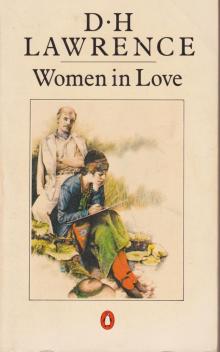 Women in Love
Women in Love The Ladybird
The Ladybird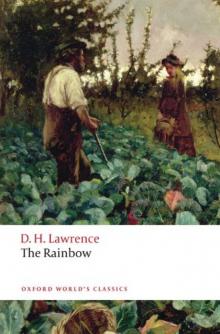 The Rainbow
The Rainbow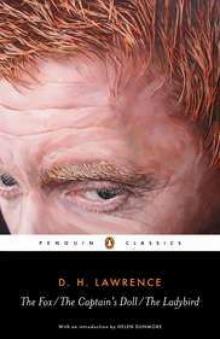 The Captain's Dol
The Captain's Dol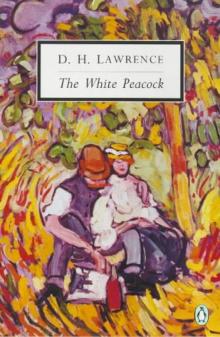 The White Peacock
The White Peacock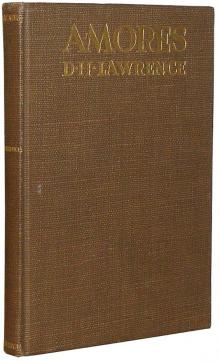 Amores
Amores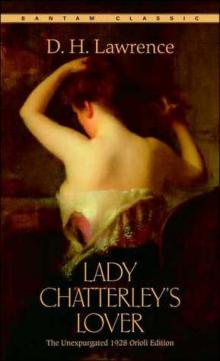 Lady Chatterley's Lover
Lady Chatterley's Lover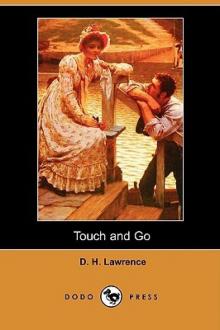 Touch and Go
Touch and Go The Wintry Peacock
The Wintry Peacock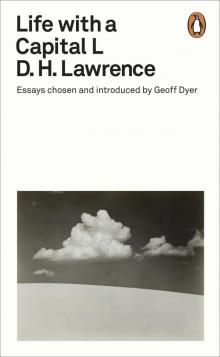 Life with a Capital L
Life with a Capital L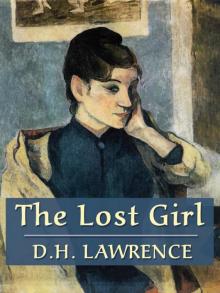 The Lost Girl
The Lost Girl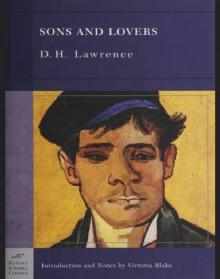 Sons and Lovers
Sons and Lovers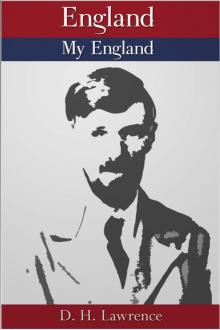 England, My England
England, My England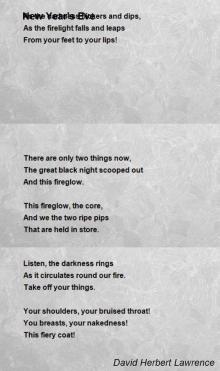 New Poems
New Poems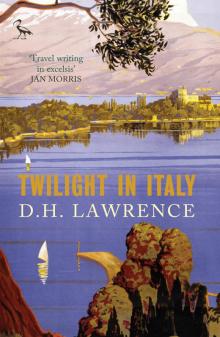 Twilight in Italy
Twilight in Italy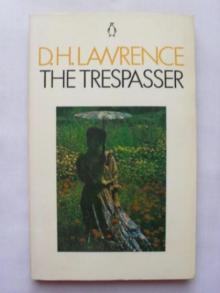 The Trespasser
The Trespasser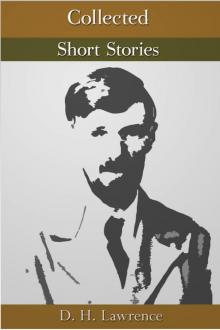 The Collected Short Stories
The Collected Short Stories The First Lady Chatterley's Lover
The First Lady Chatterley's Lover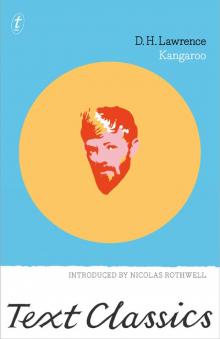 Kangaroo
Kangaroo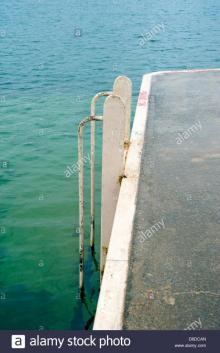 Bay
Bay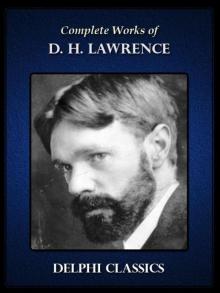 Complete Works of D.H. Lawrence
Complete Works of D.H. Lawrence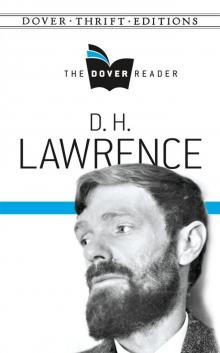 D H Lawrence- The Dover Reader
D H Lawrence- The Dover Reader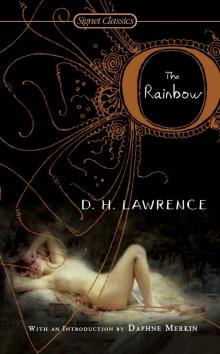 The Rainbow (100th Anniversary ed.)
The Rainbow (100th Anniversary ed.)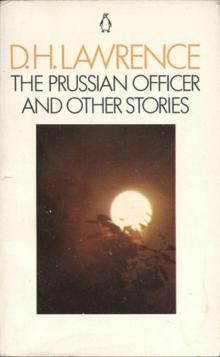 The Prussian Officer
The Prussian Officer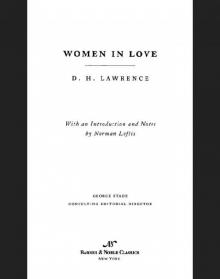 Women in Love (Barnes & Noble Classics Series)
Women in Love (Barnes & Noble Classics Series)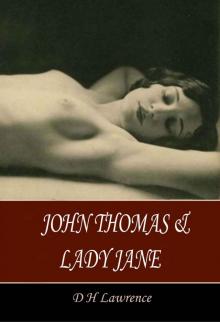 John Thomas and Lady Jane
John Thomas and Lady Jane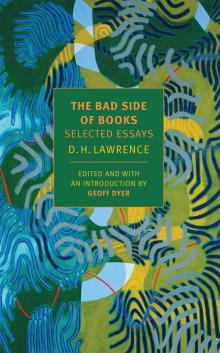 The Bad Side of Books
The Bad Side of Books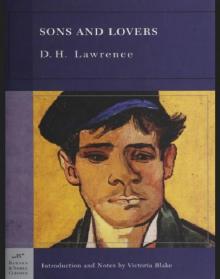 Sons and Lovers (Barnes & Noble Classics Series)
Sons and Lovers (Barnes & Noble Classics Series)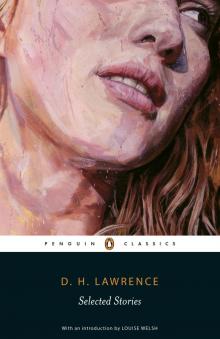 Selected Stories
Selected Stories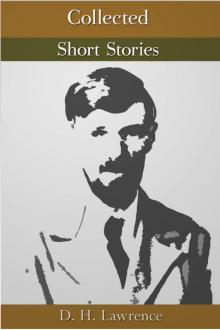 Collected Short Stories
Collected Short Stories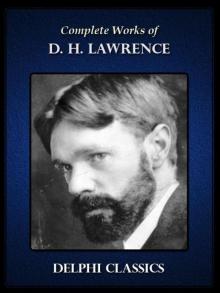 Complete Works of D.H. Lawrence (Illustrated)
Complete Works of D.H. Lawrence (Illustrated)